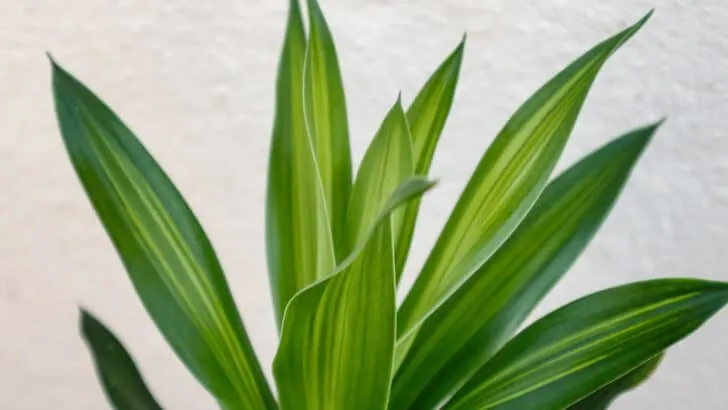Your corn plant has brown tips, and you want to know why. Here is what is probably wrong with your Dracaena fragrance care.
In this article, I examine the most common reasons corn plants get brown leaf tips and what you can do against them.
Table of Contents
8 Reasons For Brown Tips on Corn Plants
The corn plant leaves develop brown tips due to inconsistent watering, humidity issues, type of water used, stress, incorrect temperature, too much or too little light, incorrect fertilizer application, or pests.
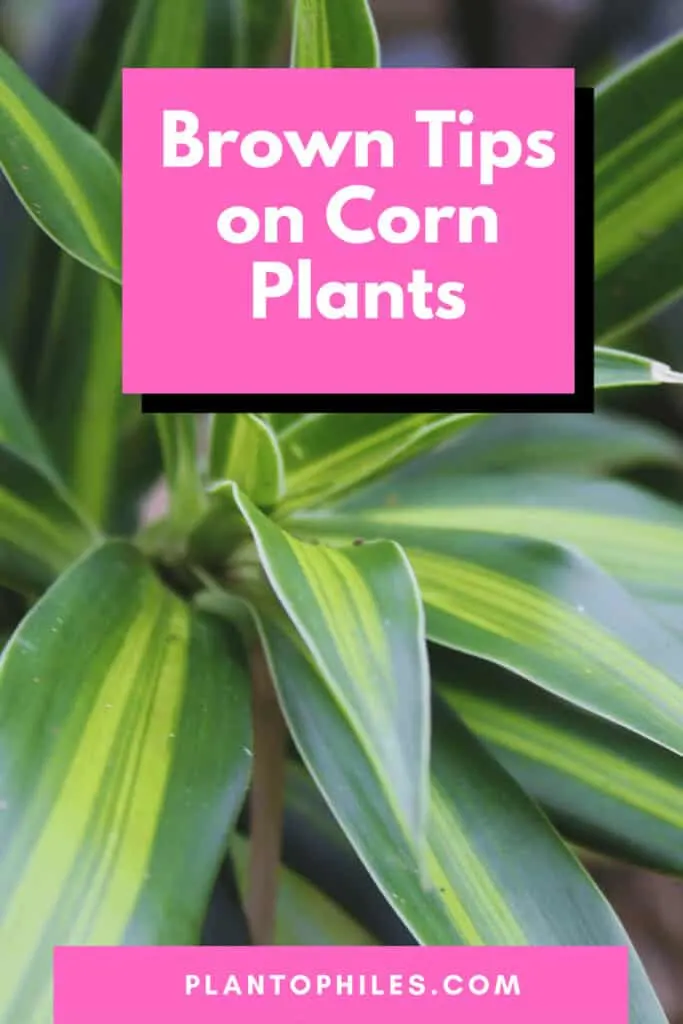
Takeaways 8 Most Common Reasons for Brown Tips on Corn Plants
| Reason | Explanation | Possible Solutions |
|---|---|---|
| Inconsistent Watering | Watering too little in spring/summer or too much in winter leads to brown tips. Overwatering can cause root rot and yellow/brown foliage. Underwatering leads to crispy, brown foliage. | Water according to soil moisture. Increase frequency in summer and reduce in winter. |
| Humidity | Low (< 40%) or high humidity can cause brown, crispy leaf tips. High humidity and wet leaves can rot the foliage. | Maintain 40-50% humidity. Spritz leaves 1-2 times a week. Use a stone tray for humidity. |
| Type of Water Used | Fluoride and chlorine in tap water can brown leaves. | Use rainwater, purified, or filtered water. Let tap water sit for 24 hours before use. |
| Stress | Sudden changes in environment, soil, or light can stress the plant. | Give the plant time to adapt. Ensure it has all the necessary nutrients and optimal conditions. |
| Temperature | Drafts and temperature extremes (< 50°F or > 90°F) can cause brown tips. | Keep plant in 60-75°F range. Avoid drafts from vents and windows. |
| Lighting | Excessive direct sunlight can burn leaves and cause brown patches. | Place in bright, indirect light. Use artificial lighting if plant appears dull. |
| Fertilizer | Overfertilization can brown leaves and lead to salt accumulation on soil. | Fertilize once per month from April to September. Flush soil with water if over-fertilized. |
| Pests | Vulnerable to spider mites, mealybugs, and thrips. These pests can lead to brown or damaged leaves. | Regularly spray plants to prevent pests. Use specific treatments for each type of pest (e.g., alcohol for mealybugs). |
1. Inconsistent Watering
Watering your corn plant too little in spring or summer or too much in winter can cause brown tips. Overwatering leads to root rot in corn plants. This also shows yellow and brown foliage. Underwatering leads to crispy and browning foliage as well.
Summer and spring are when corn plants develop the most. Therefore, they need more nutrients and water than they do in the winter.
Water corn plants according to what the soil feels like rather than following a watering plan.
In warm months, the soil will dry up faster, requiring you to water the corn plant more frequently. During the winter, the plant may require less watering because the soil will keep moist for longer.
Tropical plants thrive in humid areas with plenty of rainfall. So, as far as possible, strive to reproduce this setting in your house.
This summer has been exceptionally hot here in Switzerland so that you can see my corn plant browning on the tips.
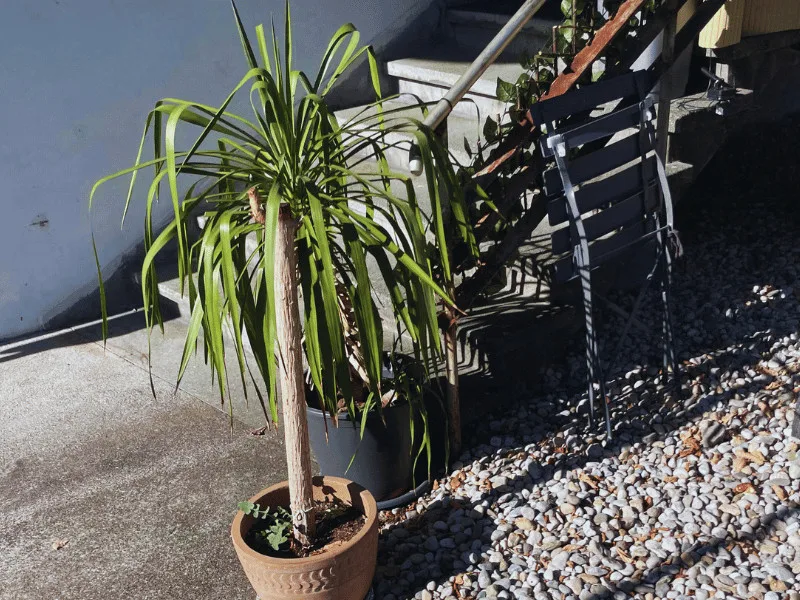
2. Too much or not enough Humidity
Humidity issues lead to brown tips. If the humidity is 40% or lower or your Dracaena fragrans are used to high humidity, it develops crispy leaf tips. On the other hand, high humidity and wet leaves for several hours can rot the foliage and cause foliage browning.
Despite its origins in the tropics, the maize plant can thrive in areas with little humidity.
A maize plant’s optimum humidity range is 40-50 percent. However, you can improve this in several methods.
Spritzing the corn plant 1-2 days a week will keep the leaves wet and assist them from drying out.
You may also arrange your houseplants to create a humidification zone in your home.
A third alternative is to use a stone tray to increase humidity while ensuring the plant does not lie completely in water.
3. Type of Water Used
Fluoride and chlorine in tap water can cause the leaves of corn plants to turn brown.
While rainwater is the most environmentally friendly choice, you may also use purified or filtered water.
Unless tap water is your only option, let it rest on the countertop for at least 24 hours until watering to enable some of the contaminants to dissipate.
While the old brown foliage will not return to green, your plant should begin to produce new green leaves.
4. Abiotic Plant Stress
A recent change generally triggers stress in plants. According to the University of Delaware, these stresses are called abiotic stress. Whether it’s the plant’s soil, illumination, or surroundings, a plant may show signs of stress due to abrupt changes.
Your houseplant may be stressed if you’ve just repotted the corn plant or brought it home.
Like any other living thing, the corn plant needs time to adapt and acclimate to its new surroundings.
The plant should gradually produce green leaves free of brown patches and streaks as long as the corn plant has all the nutrients, water, and growth circumstances it prefers.
5. The Wrong Temperature
The corn plant, like other houseplants, isn’t fond of drafts.
Keep the corn plant away from vents. Always open them and the windows regularly. Although the corn plant can endure various temperatures, it thrives between 60 and 75 degrees Fahrenheit.
If the maize plant is exposed to temperatures below 50°F or over 90°F, brown-tipped leaves will most likely emerge.
6. Lighting – Too much or too little
Corn plants thrive under bright, indirect light. The leaves of the plant might burn if exposed to excessive direct sunlight.
The presence of brown patches encircled by golden rings on the leaf of a corn plant is a telltale indication of sunburn.
The corn plant’s leaves will bend inwards from too much direct sunshine. The plant is attempting to prevent itself from drying out in this manner.
Corn plants are much more tolerant of low light, so place the plants away from direct sunlight coming through the window if possible.
Corn plants thrive in strong indirect sunshine but may also tolerate little shade.
The plant likely requires more artificial lighting than it receives if it stops growing or seems dull in color.
7. Incorrect Fertilizer Application
Overfertilizing can also cause the corn plant’s leaves to become brown.
Salt accumulation, visible on the soil surface, is another sign of overfertilization. Using a plant fertilizer once per month from April to September will be more than enough to provide your maize plant with the nutrients it requires.
If the plant has been over-fertilized, flush the soil with water. Let the water drain through the container’s bottom via the soil.
If the plant is still over-fertilized, repotting the plants with new potting soil is the best option.
8. Corn Plant Pests
Corn plants are extremely vulnerable to a wide range of pests. Insects may be avoided by spraying your plants regularly, so here are some of the most common culprits and how to spot them:
Spider Mites
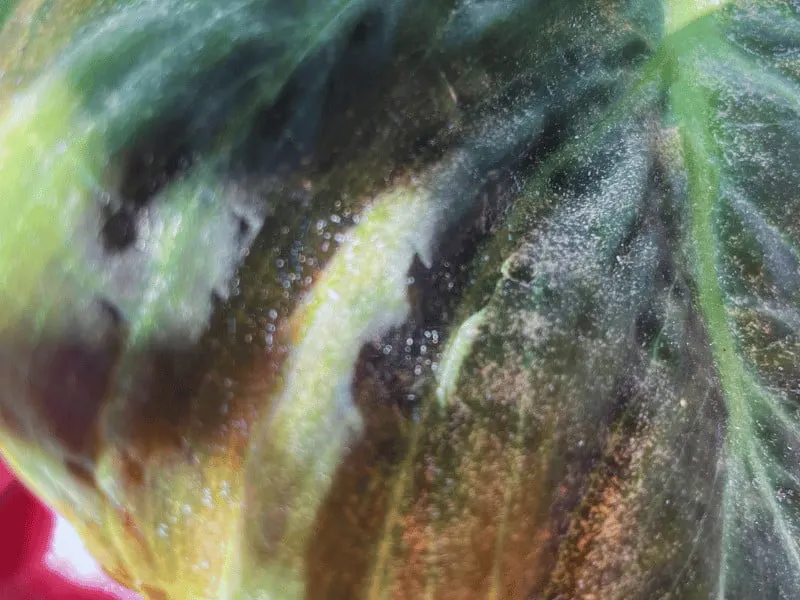
Spider mites are small moving specks that are generally white or red. They are frequently seen on the undersides of leaves, and tiny thin webs are occasionally visible.
Spider mites cause stippling on the leaves, which is proceeded mostly by the browning of the leaf. They love hot, dry conditions and will resist any frequently misted plants.
If your plant has mites, properly clean it or remove the leaves with a moist cloth.
Mealybugs
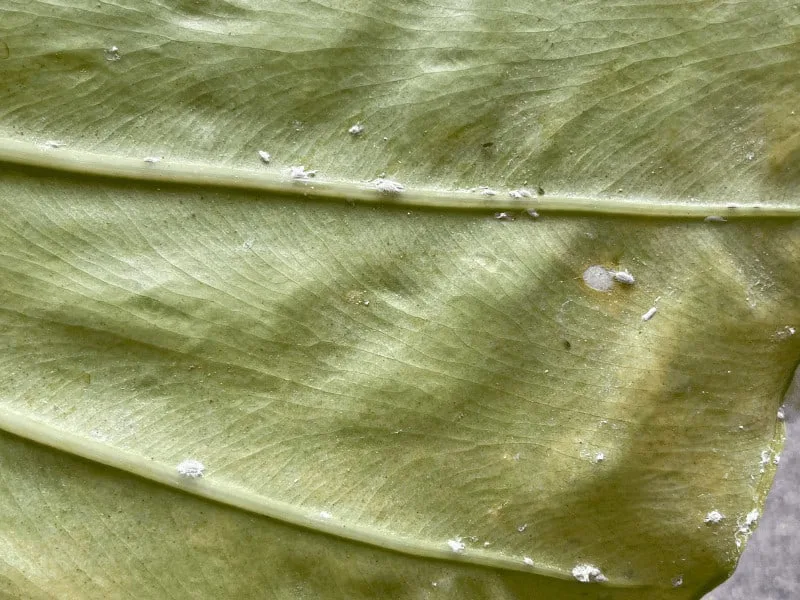
Mealybugs are slow-moving insects that eat in clusters and have waxed filaments on their bodies that give them the appearance of a cottony mass.
They’re sap-sucking insects feeding on your plant’s leaves.
To get rid of mealybugs, soak a cloth in some alcohol and use it to wipe away any visible bugs. Make a solution of 1 cup of rubbing alcohol and 4 cups of water, and put a few droplets of castile soap.
Spritz the entire plant with this solution and repeat every week or two weeks till the infestation is gone.
Thrips
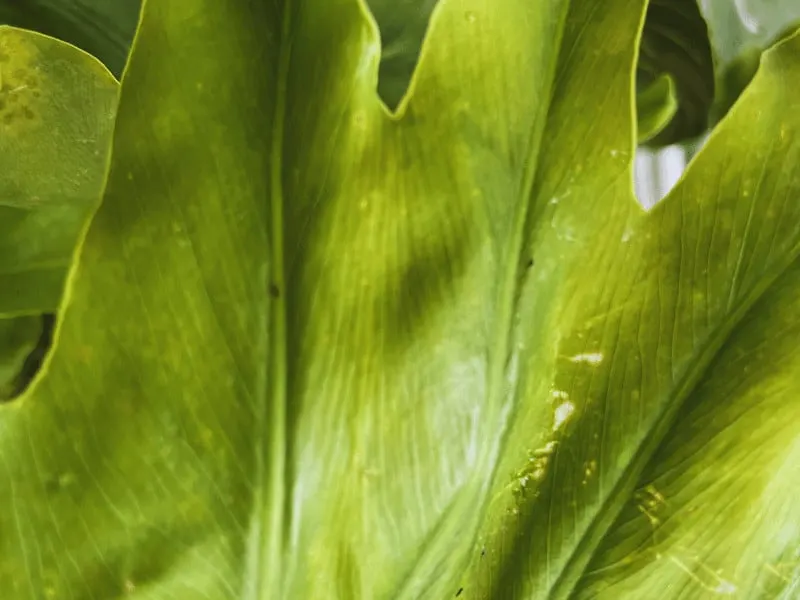
Thrips are small black insects that feed on the fluids from your plant’s leaves. Your corn plant’s leaves will become silver or develop brown stripes due to them.
To get rid of thrips, thoroughly rinse the leaves with water. Spray the plant with the same mixture as before, giving special attention to diseased leaves.
The Corn Plant
Corn plants are evergreen plants native to Africa with the scientific name Dracaena fragrans. Its scythe leaves are large and lustrous, with a golden stripe across the center.
Corn plants may reach over four feet in height (1.2m), even inside, and have a palm-tree-like appearance, making them a lovely addition to homes or businesses.
But, if your corn plants don’t grow to their maximum height, you must know the potential reasons behind it.
Corn plants, on the other hand, tend to have brown tips on their leaves.
Conclusion
Use these causes to identify brown tips on your corn plant and adjust your Dracaena care accordingly.

Daniel has been a plant enthusiast for over 20 years. He owns hundreds of houseplants and prepares for the chili growing seasons yearly with great anticipation. His favorite plants are plant species in the Araceae family, such as Monstera, Philodendron, and Anthurium. He also loves gardening and is growing hot peppers, tomatoes, and many more vegetables.

